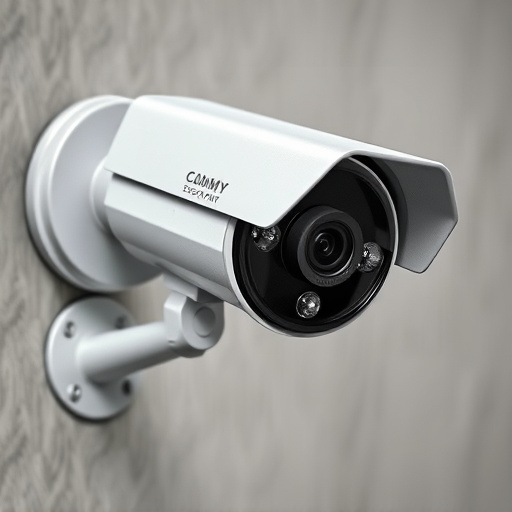Dummy security cameras, designed to look real but lack functionality, act as psychological deterrents in various settings. Strategically placed in high-traffic areas, they create a sense of surveillance that can impact intruder behavior and potentially reduce crime rates. However, their effectiveness is debated, as some criminals may not be fooled. Balancing crime prevention with privacy considerations requires compliance with local laws and transparency.
“Uncover the power of dummy security cameras—a cost-effective, non-intrusive solution for enhancing home or business security. This comprehensive guide explores their role in crime deterrence and provides an installation tutorial. From understanding the mechanics to strategic placement tips, we demystify these tools’ effectiveness.
Delve into the psychology behind why fake cameras fool criminals and learn about legal considerations for ethical deployment. Discover how these simple yet clever devices can transform your security posture.”
- Understanding Dummy Cameras: Their Role and Limitations
- Planning Your Dummy Camera Installation: Tips for Placement
- The Psychology Behind Their Effectiveness in Crime Deterrence
- Legal Considerations and Ethical Use of Fake Security Cameras
Understanding Dummy Cameras: Their Role and Limitations
Dummy security cameras, also known as fake or decoy cameras, serve as a strategic deterrent in various settings, from homes and businesses to public spaces. Their primary role is to mislead potential intruders by giving the appearance of active surveillance. These cameras are designed to look real, often mimicking the aesthetics of actual security equipment, yet they lack the functionality to capture and transmit images or videos.
While dummy cameras can be an effective visual deterrent, they have limitations. They do not replace actual security systems and should be used as a supplementary measure. The effectiveness of dummy cameras in deterring crime is debatable; some studies suggest that criminals may not be easily fooled, especially if the decoy devices are easily identifiable. Nevertheless, when strategically placed, these cameras can create an illusion of enhanced security, potentially discouraging unwanted activities.
Planning Your Dummy Camera Installation: Tips for Placement
When planning your dummy security camera installation, strategic placement is key to making potential criminals think twice before acting. Consider areas with high foot traffic and visible locations where real cameras would typically be placed. Windows, entrances, exits, and valuable assets are prime spots. The goal is to create a sense of surveillance that deters crime, so mimic the appearance and positioning of genuine security equipment.
Think like a criminal; where would they look for vulnerabilities? By strategically placing dummy cameras in these areas, you can effectively communicate that your property is under watchful eyes. Remember, while dummy cameras don’t capture actual footage, their presence can significantly impact an intruder’s behavior, acting as a powerful psychological deterrent to potential criminals.
The Psychology Behind Their Effectiveness in Crime Deterrence
The presence of security cameras is often perceived as a powerful deterrent to potential criminals, but do dummy or fake cameras truly have an impact on crime rates? The psychology behind their effectiveness lies in the mind’s perception of surveillance. Criminals are inherently risk-averse; the thought of being watched increases their likelihood of choosing an alternative target. Even though dummy cameras may not capture any real footage, their visible presence can create a sense of heightened security and deter individuals from committing offenses.
This psychological effect is further enhanced by the belief that law enforcement or security personnel are constantly monitoring these devices. The mere illusion of surveillance can alter behavioral patterns and encourage individuals to adhere to societal norms, thereby reducing crime opportunities. Thus, while dummy cameras may not actively prevent crimes, they play a subtle yet significant role in shaping public behavior and fostering a sense of safety.
Legal Considerations and Ethical Use of Fake Security Cameras
While dummy security cameras may seem like a straightforward solution, there are crucial legal considerations to keep in mind. Using fake cameras must adhere to local laws and regulations regarding surveillance and privacy. It’s important to understand that simply placing a realistic-looking dummy camera without proper authorization can be considered a violation of privacy rights and could lead to legal consequences.
The ethical use of these devices is equally significant. While they might deter crime by simulating active surveillance, their presence should not give false security. Property owners should ensure that nearby residents or businesses are aware of the use of dummy cameras to avoid misunderstandings or distrust. The responsible deployment of fake security cameras balances the potential benefits of crime prevention with the ethical responsibility to respect privacy and foster transparency.
While dummy security cameras may not physically prevent crimes, their strategic placement can significantly deter potential perpetrators due to the psychological impact of believing they are under constant surveillance. When used ethically and in compliance with local laws, these fake cameras can serve as a cost-effective and game-changing addition to home or business security strategies, encouraging folks to think twice before engaging in illegal activities. Remember that understanding their limitations and following best practices for installation is key to maximizing their effectiveness in deterring crime.
